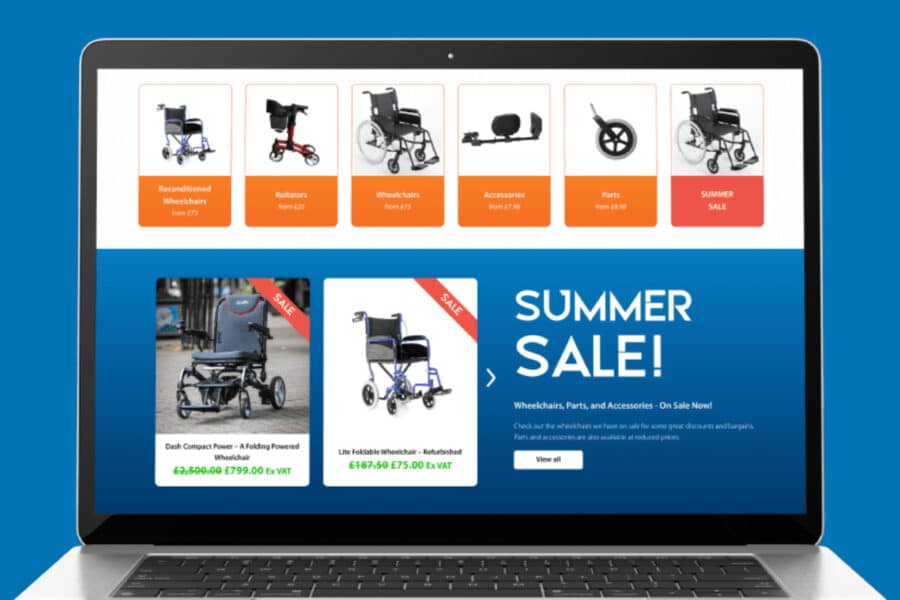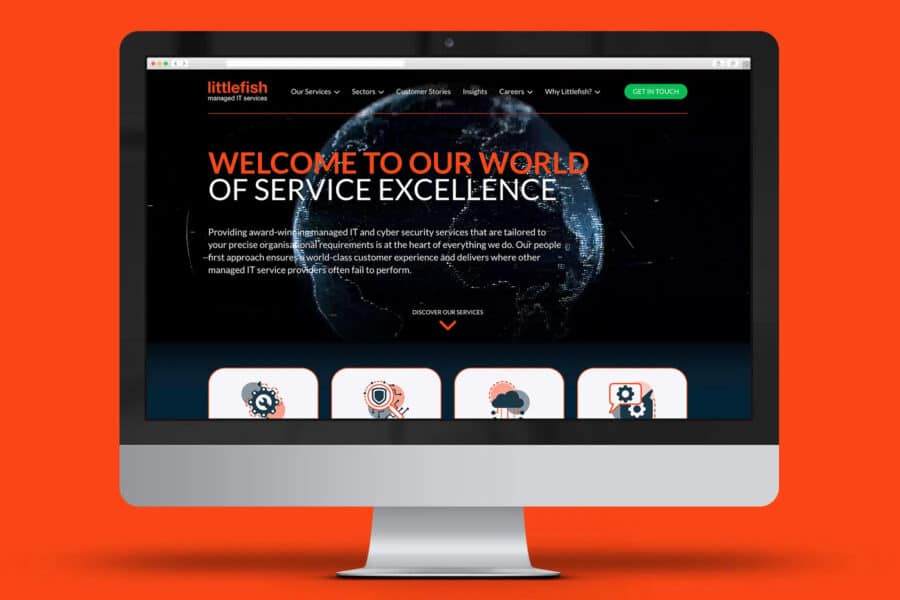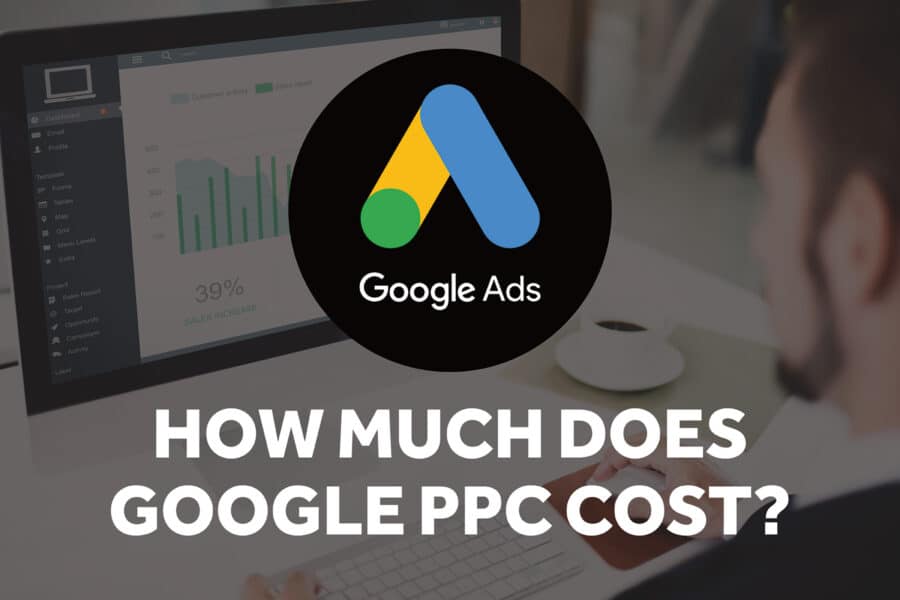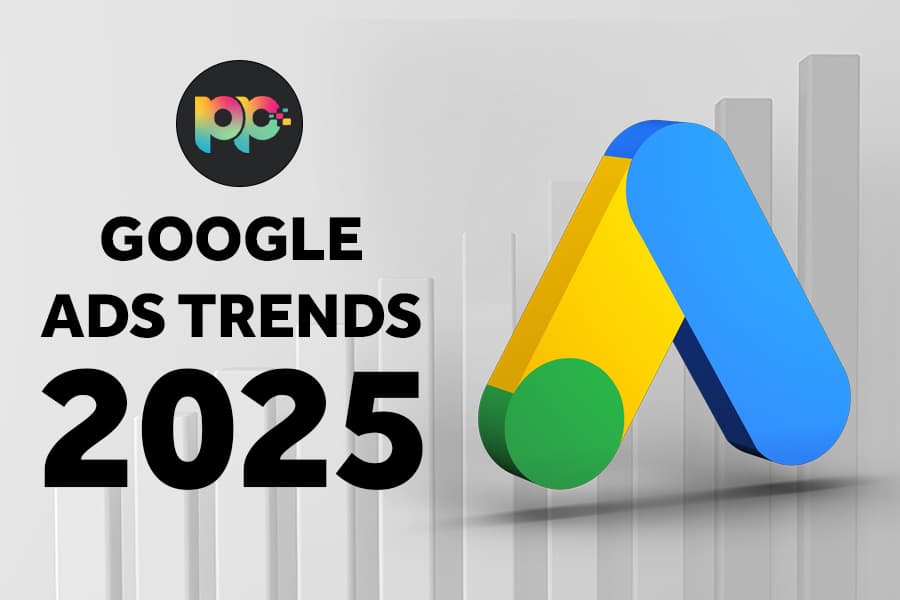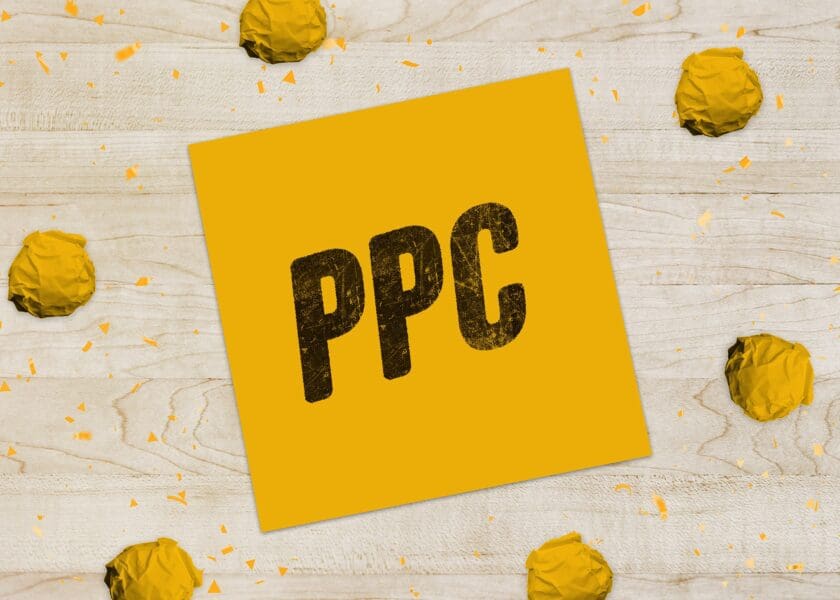Request a Proposal
Proud to work with
Our Google Video Ads Management Services
Skippable In-Stream Ads
These ads appear before, during, or after other videos. Viewers have the option to skip them after 5 seconds. Advertisers are only charged if a viewer watches for at least 30 seconds, watches the entire ad (if it's shorter than 30 seconds), or interacts with the ad by clicking on it. This format ensures that you only pay for engaged viewers who show genuine interest in your content, making it a cost-effective way to reach your target audience.
Non-Skippable In-Stream Ads
These ads must be watched in full before the viewer can proceed to their chosen video. They can be up to 15 seconds long, ensuring your message is fully delivered. This format guarantees that viewers see your entire ad, making it ideal for concise, impactful messaging. It's a powerful way to increase brand awareness and deliver key information without the risk of being skipped, ensuring maximum visibility for your campaign.
Bumper Ads
These short, non-skippable ads last up to 6 seconds, making them perfect for delivering brief, memorable messages. Their concise format ensures that viewers watch the entire ad, providing a guaranteed exposure. Bumper ads are ideal for reinforcing brand awareness, promoting quick calls-to-action, or highlighting key features of a product or service. Despite their brevity, they can be highly effective in capturing attention and leaving a lasting impression on your audience.
In-Feed Video Ads
Previously known as discovery ads, these in-feed video ads appear alongside YouTube search results, on YouTube watch pagesand on the YouTube homepage. They feature a thumbnail and a few lines of text to entice viewers to click and watch. These ads are particularly effective for engaging users who are actively searching for related content, making them more likely to watch and interact with your video. This format is great for driving interest and engagement, as it reaches viewers at moments when they are open to discovering new content.
Outstream Ads
These mobile-only ads play on partner sites and apps outside of YouTube. They auto-play with the sound off, prompting users to tap for sound if interested. Outstream ads are designed to expand your video ad reach beyond YouTube, targeting users across a variety of platforms. This format is effective for capturing attention in a non-intrusive way, increasing the chances of engagement as viewers are drawn to the visual content first. Ideal for increasing brand visibility and reaching a wider audience, outstream ads ensure your message is seen in diverse digital environments.
Masthead Ads
These ads appear prominently at the top of the YouTube homepage, offering extensive reach and visibility. Known as masthead ads, they are perfect for large-scale campaigns aimed at driving significant brand awareness. By occupying prime digital real estate, these ads ensure your message is seen by a vast audience, making them ideal for product launches, major announcements, or brand-building efforts. The high visibility of masthead ads can lead to increased engagement and recognition, providing a powerful tool for reaching a broad and diverse audience effectively.
Ad Sequence
This format lets advertisers present a series of video ads in a specific order, creating a cohesive story or narrative over time. Known as ad sequencing, it allows you to gradually build a message, engage viewers with a developing storylineand deepen their connection with your brand. Each ad can introduce new elements or reinforce previous messages, making it ideal for campaigns that aim to educate, entertain, or emotionally engage the audience. Ad sequencing is effective for guiding viewers through a journey, ultimately driving stronger brand recall and a more impactful marketing experience.
You're in Safe Hands - We're a Google Partner
It goes without saying that Google is one of the world’s most powerful and well-known digital platforms. Google it, ask Google and what does Google say has become synonymous in our day-to-day conversations, with many taking to the site in search of answers to life’s most persistent questions and conundrums.
Priority Pixels has been an official Google Partner since 2018 and boasts the expertise to drive the right kind of traffic to your website and maximise your return-on-investment (ROI) through Google’s innovative paid advertising platform called Google Ads.
Google Ads has become an increasingly important platform in recent years for large and small businesses alike. The platform can increase your lead generation and digital conversions as well as boost your brand awareness and visibility.
With Priority Pixels, you can rest assured your marketing spend is in the hands of a team of Google-certified analysts. As an official Google Partner, we are certified in all aspects of the Google Ads platform.
Our team also regularly participate in Google’s ongoing training and strive to meet their high-performance standards. As a Google Partner, Priority Pixels has access to additional education, support and other important resources. As a result, our paid search team boast years of combined expertise in Google Adsand have the training and industry experience to tailor your paid search campaign to the needs of your business.
What are the Benefits of Using Google Video Ads?
-
Enhanced Engagement
Video content inherently captures attention more effectively than text or static images due to its dynamic nature. The combination of visual and auditory elements engages multiple senses simultaneously, making it easier to capture and retain viewer interest. Google Video Ads leverage this by enabling businesses to create rich, immersive experiences that go beyond simple advertising.
Through Google Video Ads, businesses can tell compelling stories that resonate with their audience on an emotional level. Whether it’s a heartfelt narrative about the brand’s journey, a demonstration of how a product solves a problem, or a captivating depiction of the benefits and features of a service, video ads provide a versatile platform for storytelling. This ability to weave narratives helps in building a deeper connection with viewers, fostering trust and loyalty.
Moreover, video ads are highly effective in demonstrating products in action. They can showcase the functionality, benefitsand unique selling points of a product in a way that static images or text descriptions cannot. For example, a video ad can illustrate how a kitchen gadget simplifies cooking, how a skincare product improves complexion over time, or how a tech gadget operates seamlessly. This visual demonstration helps potential customers better understand and appreciate the product, increasing the likelihood of purchase.
Google Video Ads also excel in evoking emotions. Whether it’s joy, excitement, nostalgia, or empathy, emotional engagement plays a crucial role in influencing consumer behavior. By using music, voiceoversand visuals, video ads can create an emotional impact that resonates with viewers long after they’ve seen the ad. This emotional connection not only enhances brand recall but also motivates viewers to take desired actions, such as visiting a website, making a purchase, or sharing the ad with others.
-
Broad Reach
Google Video Ads leverage YouTube’s extensive user base, which consists of billions of active users from around the world. As the second largest search engine and a leading video platform, YouTube offers unparalleled reach, allowing businesses to connect with a vast and varied audience. This broad reach is one of the primary advantages of using Google Video Ads.
By advertising on YouTube, businesses can tap into a global audience that spans all demographics, including different age groups, genders, interestsand geographic locations. This means that whether a business is targeting teenagers interested in the latest fashion trends, young professionals looking for tech gadgets, or parents searching for educational content for their children, YouTube has the audience that matches these segments.
The diversity of YouTube’s audience enables businesses to reach both niche markets and a broad consumer base. This versatility is especially valuable for brands looking to increase their visibility and expand their market presence. For example, a local business can target viewers within a specific geographic area to drive foot traffic to their store, while a global brand can launch campaigns that resonate with international audiences, promoting worldwide sales and recognition.
Moreover, YouTube’s broad reach is not just about quantity but also about quality. The platform provides various targeting options that help businesses deliver their ads to the right audience. Advertisers can use demographic targeting to reach specific age groups or genders, interest targeting to connect with users based on their hobbies and passionsand even behavioural targeting to engage viewers based on their past interactions and search history. This ensures that ads are shown to users who are most likely to be interested in the product or service being advertised, maximising the effectiveness of the campaign.
Furthermore, the widespread use of YouTube across different devices—such as smartphones, tablets, desktopsand smart TVs—ensures that video ads reach viewers wherever they are, at any time. This omnipresence is crucial for maintaining consistent brand visibility and engaging users in various contexts, whether they are watching videos during their commute, at home, or on the go.
-
Targeted Advertising
Google Video Ads offer advanced targeting options that help businesses reach their ideal audience with precision, increasing engagement and conversions.
Demographic targeting allows businesses to reach audiences based on age, gender, parental statusand household income. For example, brands targeting young adults can specify an age range of 18-24, ensuring their ads reach the most relevant viewers.
Geographic targeting enables advertisers to focus campaigns on specific locations, from countries and regions to cities and postal codes. This is particularly beneficial for local businesses aiming to attract nearby customers or international brands tailoring messages to different markets.
Interest-based targeting leverages data on users’ interests and hobbies, such as sports, music, traveland fashion. Advertisers can choose from predefined categories or create custom affinity audiences, connecting with users who have shown genuine interest in related topics.
Behavioural targeting focuses on users’ past interactions and behaviours online, such as websites visited and searches conducted. This method ensures ads are relevant to the viewer’s current interests and needs, increasing the likelihood of conversion.
Re-marketing allows businesses to re-engage users who have previously interacted with their website or YouTube channel. By showing targeted ads to these users, businesses can remind them of their products or services, encouraging them to return and complete a desired action.
Contextual targeting places ads on YouTube videos and partner websites that are contextually relevant to the ad’s content. This relevance enhances user experience and increases the chances of engagement.
Custom affinity audiences enable advertisers to define their own audience segments based on interests, URLs visitedand apps used. This flexibility allows businesses to create specific audience profiles that match their ideal customer base.
Life events targeting focuses on users undergoing significant life changes, such as getting married or moving homes. These moments often trigger the need for new products and services, making them ideal times to reach potential customers.
In summary, Google Video Ads’ advanced targeting options ensure businesses can reach the most relevant audiences, driving higher engagement and conversions.
-
Cost-Effectiveness
With Google Video Ads, businesses benefit from a cost-per-view (CPV) pricing model, which means they only pay when a user actively engages with their ad. Engagement is defined as watching the ad for at least 30 seconds, watching the entire ad if it’s shorter than 30 seconds, or interacting with the ad by clicking on a call-to-action (CTA) overlay, companion banner, or other interactive elements.
This model ensures that your advertising budget is spent efficiently, targeting viewers who show genuine interest in your content. Rather than paying for every impression, regardless of whether the viewer paid attention or not, the CPV model guarantees that you only incur costs when there is a measurable engagement. This approach is particularly advantageous for businesses aiming to maximise the return on their advertising investment.
For example, if a viewer skips the ad before the 30-second mark and doesn’t click on any links, you are not charged. This allows you to reach a large audience without wasting budget on uninterested viewers. It also provides valuable insights into how your video ads perform and how audiences interact with your content, enabling you to refine your strategy for better results.
Moreover, the CPV model allows for better budget management and forecasting. Businesses can set daily or campaign lifetime budgets, ensuring they stay within their financial limits while achieving their advertising goals. By focusing on engaged viewers, this model helps improve the overall effectiveness of your video campaigns, leading to higher conversion rates and better customer acquisition.
In essence, Google Video Ads’ CPV model aligns costs directly with audience engagement, ensuring that your marketing spend is dedicated to viewers who are most likely to be interested in your product or service. This efficiency not only enhances the impact of your advertising efforts but also maximises the value derived from every pound spent on your campaigns.
-
Measurable Results
Google Video Ads offer comprehensive performance metrics that provide deep insights into your campaign’s effectiveness. These detailed metrics include views, clicks, view-through ratesand audience engagement, giving businesses a clear understanding of their ad’s impact.
Views show how many times your video ad has been watched. The view-through rate (VTR), the percentage of viewers who watch your ad to a specific point, gauges the reach and initial engagement. A high VTR indicates that your content resonates well, while a lower rate suggests a need for creative adjustments.
Clicks measure how often viewers click on your ad or associated call-to-action elements. The click-through rate (CTR) is the ratio of clicks to impressions, showing the effectiveness of your ad in driving traffic. Monitoring CTR helps you understand how compelling your messaging and design are.
Audience engagement metrics delve into how viewers interact with your ad, including average watch time, repeat viewsand interaction rates with elements like quizzes or polls. These metrics provide insights into how engaging your video ad is, helping identify the most effective content.
Google Video Ads allow real-time tracking of these metrics, offering transparency and enabling continuous monitoring of your campaign’s performance. Identifying trends and making timely adjustments ensures that your ad remains effective.
Detailed performance metrics enable data-driven decisions to optimise campaigns. By analysing this data, you can pinpoint which ad elements perform well and which need improvement. This could involve altering content, adjusting targeting, or modifying the call-to-action.
These insights help refine video ad strategies to improve effectiveness, maximising return on investment (ROI). By testing, measuringand adjusting, businesses can focus on high-performing segments and achieve campaign goals more efficiently.
-
Brand Storytelling
Video ads are particularly effective for storytelling, offering a dynamic platform for businesses to convey their brand’s message, valuesand personality. Combining visual, auditoryand emotional elements, video is a powerful medium for narrative-driven content.
Video ads allow businesses to craft detailed narratives that clearly communicate their brand’s message, whether it’s the company’s origins, mission, or product benefits. The rich, engaging nature of video ensures these messages resonate deeply with the audience.
Through imagery, tone, musicand voiceovers, videos can express a brand’s core values and personality. For instance, a brand committed to sustainability can use video to showcase eco-friendly practices and community initiatives, highlighting its dedication to positive environmental impact.
Video ads excel at evoking emotions, whether through heartwarming stories, humour, or inspiring visuals. This emotional engagement humanises the brand, making it more relatable and memorable. Emotional connections foster loyalty and trust, as viewers feel more personally connected to the brand.
Consistently delivering engaging video content strengthens relationships with the audience. Storytelling through video not only captures attention but also fosters a deeper understanding and appreciation of the brand, building loyalty and encouraging repeat business and recommendations.
The dynamic nature of video—moving images and sound—creates a lasting impression. In today’s fast-paced digital world, memorable video ads enhance brand recall, ensuring the brand remains top-of-mind for consumers.
Videos are ideal for demonstrating products and services in action. Storytelling can showcase how offerings solve real-world problems, fit into daily lives, or outperform competitors, engaging viewers by showing both practical and emotional benefits.
-
Re-marketing Opportunities
Google Video Ads provide powerful re-marketing capabilities that allow businesses to target users who have previously interacted with their website or YouTube channel. This re-marketing strategy helps reinforce your message, encourages repeat visitsand increases the likelihood of conversions.
Re-marketing with Google Video Ads means you can specifically target users who have shown interest in your brand by visiting your website, watching your YouTube videos, or interacting with your YouTube channel. This ensures your ads are seen by an audience already familiar with your brand and interested in your products or services.
By showing video ads to users who have previously engaged with your content, you reinforce your brand’s message. Repeated exposure helps solidify your brand in potential customers’ minds, making them more likely to remember your products or services. Keeping your brand top-of-mind is crucial in guiding users through the buyer’s journey.
Re-marketing video ads serve as reminders to users about your brand, encouraging them to return to your website or YouTube channel. Whether showcasing new products, offering promotions, or providing updates, these ads prompt users to revisit your site and engage further, leading to higher customer retention and loyalty.
Users who have already shown interest in your brand are more likely to convert. Re-marketing through Google Video Ads targets these high-potential customers, increasing conversion chances. Whether the goal is to complete a purchase, sign up for a newsletter, or request more information, re-marketing ads effectively nudge users towards taking the desired action.
Google allows businesses to create customised re-marketing lists based on specific user actions, ensuring your video ads are highly relevant to users’ interests and behaviours, increasing campaign effectiveness.
Video ads are inherently engaging and capture attention quickly. When combined with re-marketing, this dynamic content becomes even more powerful, telling compelling stories and highlighting unique selling points tailored to users already interested in your brand.
-
High Conversion Rates
Video ads can significantly boost conversion rates by effectively showcasing products, explaining featuresand demonstrating benefits in an engaging and informative way. The dynamic nature of video allows businesses to present their offerings in a manner that is both visually appealing and easy to understand, making it easier for potential customers to grasp the value of the products or services.
Through video, businesses can provide a comprehensive look at their products, highlighting key features and unique selling points. This can include high-quality visuals, 360-degree viewsand close-ups that help viewers see the product in detail. By showing the product in action, videos can illustrate how it works and its practical applications, making it more relatable and desirable.
Video ads offer the perfect platform to explain complex features in a straightforward and engaging manner. Businesses can break down the benefits of their products or services into digestible segments, using demonstrations, animationsand real-life examples. This helps potential customers understand how the features meet their needs or solve their problems, increasing their interest and trust in the product.
Demonstrating the benefits of a product through video helps potential customers envision how it can improve their lives. This can be achieved through customer testimonials, before-and-after scenarios, or use cases that showcase the positive impact of the product. Seeing the benefits in action reinforces the product’s value proposition and encourages viewers to consider making a purchase.
Including clear and compelling calls-to-action (CTAs) within video ads is crucial for driving conversions. CTAs can prompt viewers to take immediate actions, such as visiting a website, signing up for a newsletter, or making a purchase. Effective CTAs are typically straightforward and persuasive, encouraging viewers to act on their interest while their engagement is high.
Google Video Ads FAQs
What are Google Video Ads?
Google Video Ads are advertisements that appear on YouTube and across the Google Display Network. They can include various formats like skippable and non-skippable in-stream ads, bumper adsand discovery ads, designed to engage viewers and drive action.
How do Google Video Ads work?
Google Video Ads work by displaying your video content to users on YouTube and partner sites. You only pay when viewers watch your ad for a certain duration or interact with it. This ensures your budget is spent on engaged viewers.
What types of Google Video Ads can I use?
The main types of Google Video Ads include skippable in-stream ads, non-skippable in-stream ads, bumper ads, in-feed video adsand outstream ads. Each format serves different campaign goals, from building awareness to driving conversions.
How can Google Video Ads help my business?
Google Video Ads can enhance brand visibility, engage a broad and targeted audienceand drive higher conversion rates by showcasing your products or services dynamically. They also offer detailed performance metrics for optimising your campaigns.
What is the cost structure for Google Video Ads?
Google Video Ads typically operate on a cost-per-view (CPV) or cost-per-thousand impressions (CPM) model. You pay only when a viewer watches at least 30 seconds of your ad, the entire ad if it’s shorter, or interacts with it.
How can I target the right audience with Google Video Ads?
Google Video Ads offer advanced targeting options, including demographic, geographic, interest-basedand behavioural targeting. You can also use re-marketing to reach users who have previously interacted with your website or YouTube channel.
What metrics are available to measure the performance of Google Video Ads?
Google Video Ads provide detailed metrics such as views, view-through rates, click-through rates, average watch timeand audience engagement. These metrics help you track and optimise the effectiveness of your campaigns.
How do I create effective Google Video Ads?
To create effective Google Video Ads, focus on clear messaging, engaging visualsand strong calls-to-action. Highlight key features and benefits of your product or service and ensure your content is tailored to your target audience.
Can I use Google Video Ads for remarketing?
Yes, Google Video Ads are excellent for re-marketing. You can target users who have previously visited your website or interacted with your YouTube channel, reinforcing your message and encouraging repeat visits or conversions.
How do I get started with Google Video Ads?
To get started with Google Video Ads, create a Google Ads account, set up your campaign, choose your ad format, define your targeting optionsand upload your video content. Our team at Priority Pixels can help manage and optimise your video ad campaigns for the best results.

